Fougère overshirt, but make it gay
Hand-sewing! Pattern tweaks! Search for the perfect interfacing!
In December, I made my first garment (non-knitted I mean) in quite a few years, and I loved it so much I started wearing it all the time.
A bit under a month later, I made another one.
Let me introduce…
My Gay Shirt
Fabric: linen
Thread: linen
Buttons: coconut
Sewing: by hand
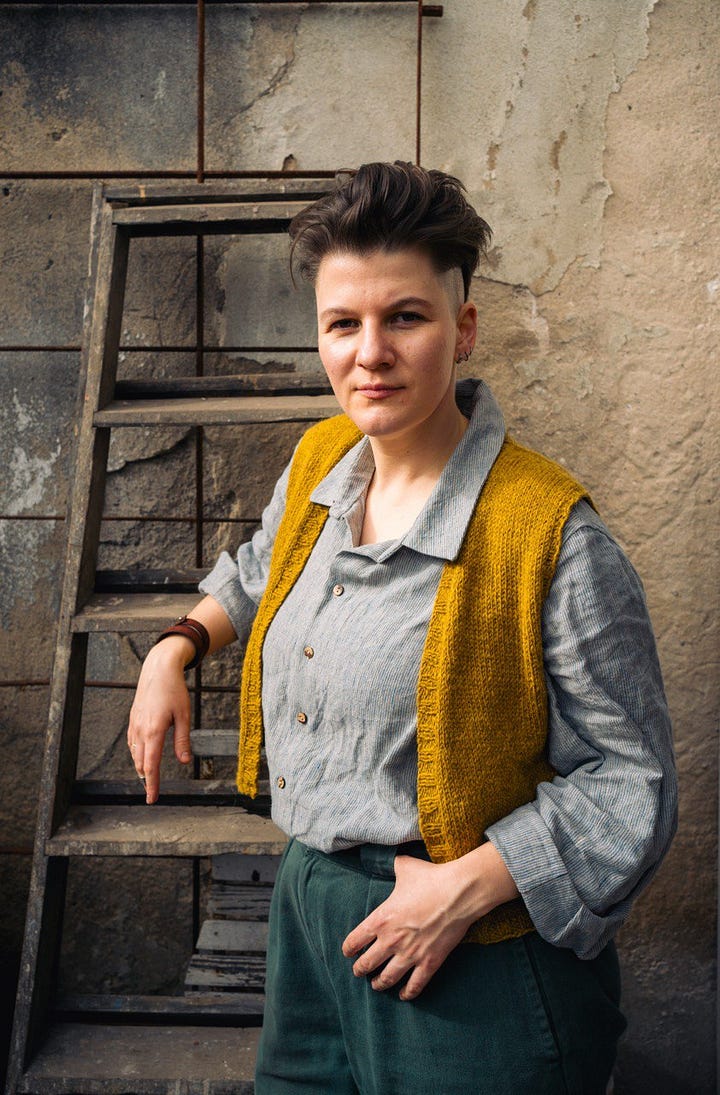
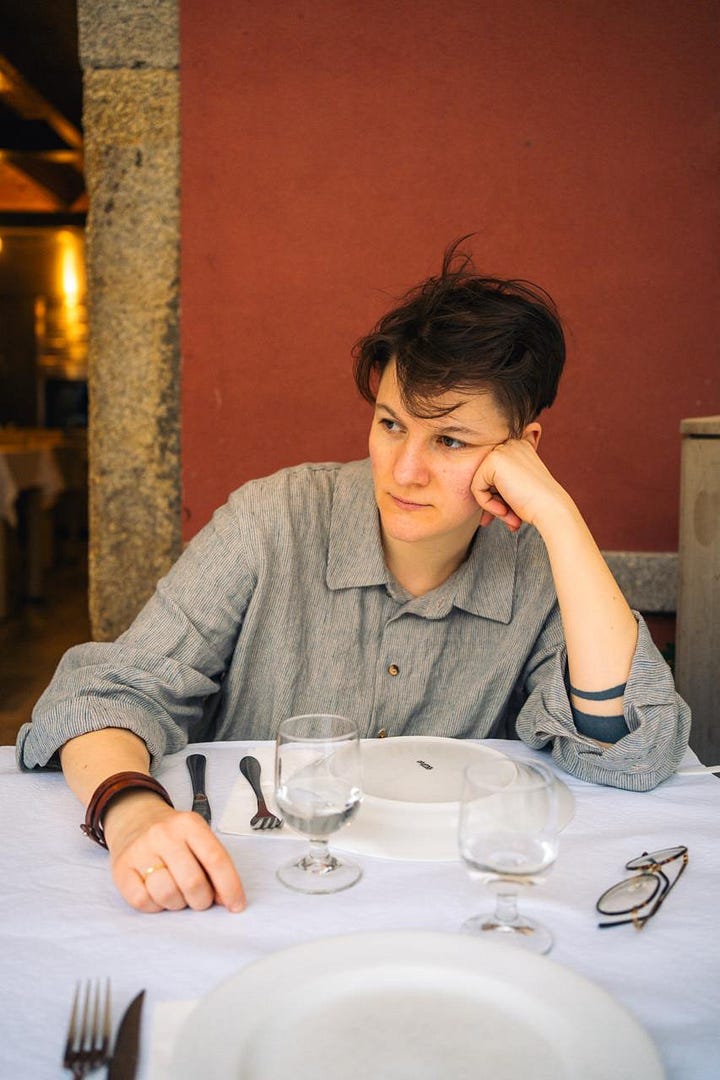
I took the Fougère Overshirt pattern by Deer&Doe pattern (I learned about it from The Social Fabric blog) and, just as I promised to, made it by hand.
The pattern features:
Oversizedness (it’s a word now)
3-piece sleeves
Classic collar with collar stand and moderate top collar
Box pleat at the back
Chest pockets
Separate bottom piece/facing
There’s another version of the pattern (shorter, and with elasticised waist) that makes a bomber jacket, but I was interested in a shirt version. I might make the bomber version later though.
Pattern changes
I made a few changes to the pattern:
First, I skipped the chest pockets. To be honest, I don’t understand why they are included so often, especially when it’s a lighter weight store-bought shirt. After a few washes, they start pulling and distorting the fabric and usually end up looking like shit. The only reason I’d consider adding a chest pocket is if it had some kind of a twist, like double welts or something more complex.
Second, I skipped the facing. The pattern suggests cutting extra fabric pieces and attaching them to the bottom of the shirt (shown in gray in the picture). I decided to skip this part since it was purely decorative and I planned to wear the shirt tucked in anyway.
My process
Fabric and preparation
I had two meters of striped linen lying around that I originally planned to use as the bottom layer of a quilt. But let’s be real — I’m not a quilter.
So, a shirt it was. The pattern is supposed to be very oversized, so it’s a good thing I had the full two meters. I probably could have squeezed it into 1.5, but that would have required a much more careful layout and cutting.
Since I had plenty of fabric, I took a more relaxed approach — cutting each section as I went, only moving on to cutting the next piece after finishing the previous one. This was mostly because I wanted to start sewing RIGHT NOW. But if you sew, do as I say, not as I do: cut everything beforehand (unless you definitely know what you’re doing).
Thread choice
For the stitching, I used No. 40 undyed linen thread. If you like hand sewing, I highly recommend it: it’s much stronger than cotton thread and adds a beautiful texture, especially for topstitching. If your linen fabric is undyed, the color match is perfect, but even on dyed fabric, it would make a great contrast.
The only thing is, linen thread tends to curl more than cotton one, so it takes some getting used to. But once you do, it’s such a pleasure to work with!
And whenever you have to sew more than a single seam by hand, I highly recommend using a thimble! It will save your fingers.
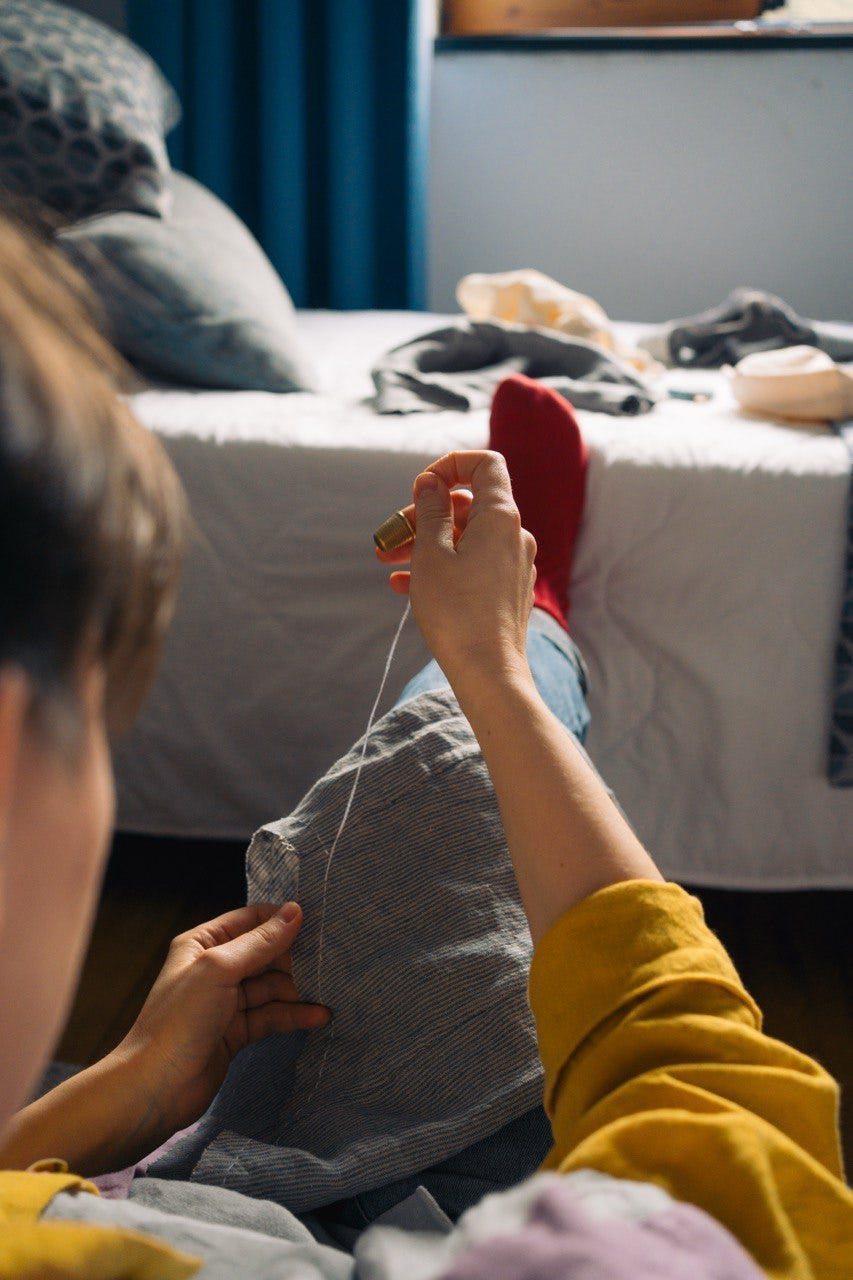
Seams and finishes
I have to confess.
I love flat felled seams. They don’t always make sense, but when they do, nobody can stop me.
No one could stop me this time either, so flat fell I did. I know you cannot really see the flat felling in these pictures, but they are here to look pretty, not to be a how-to.
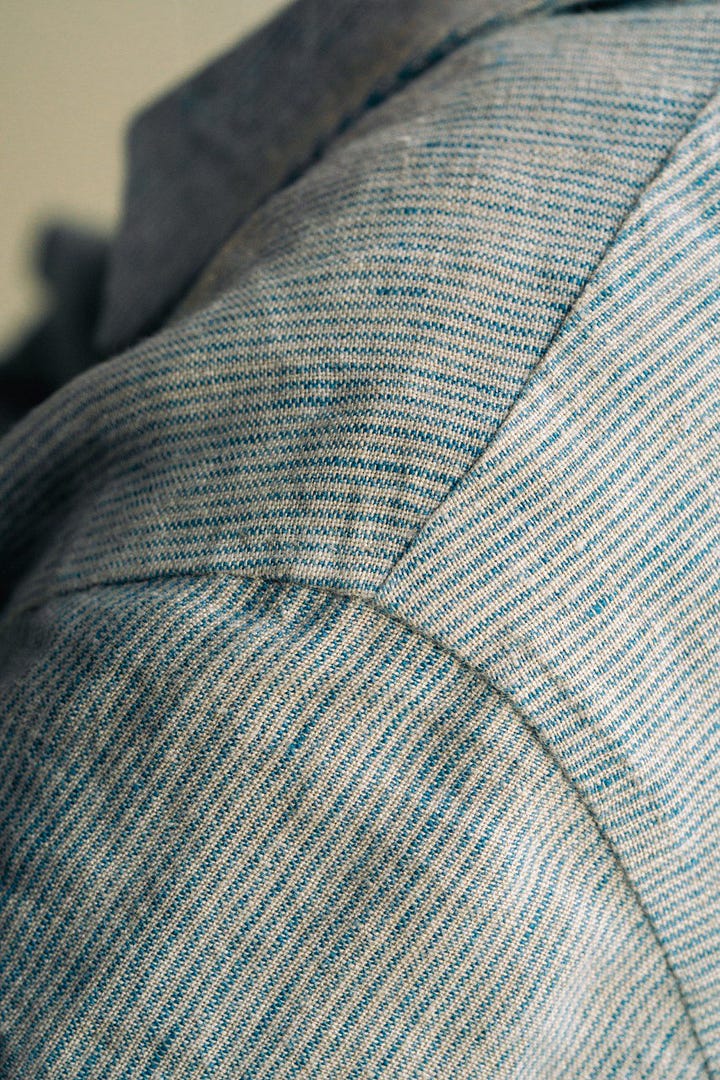
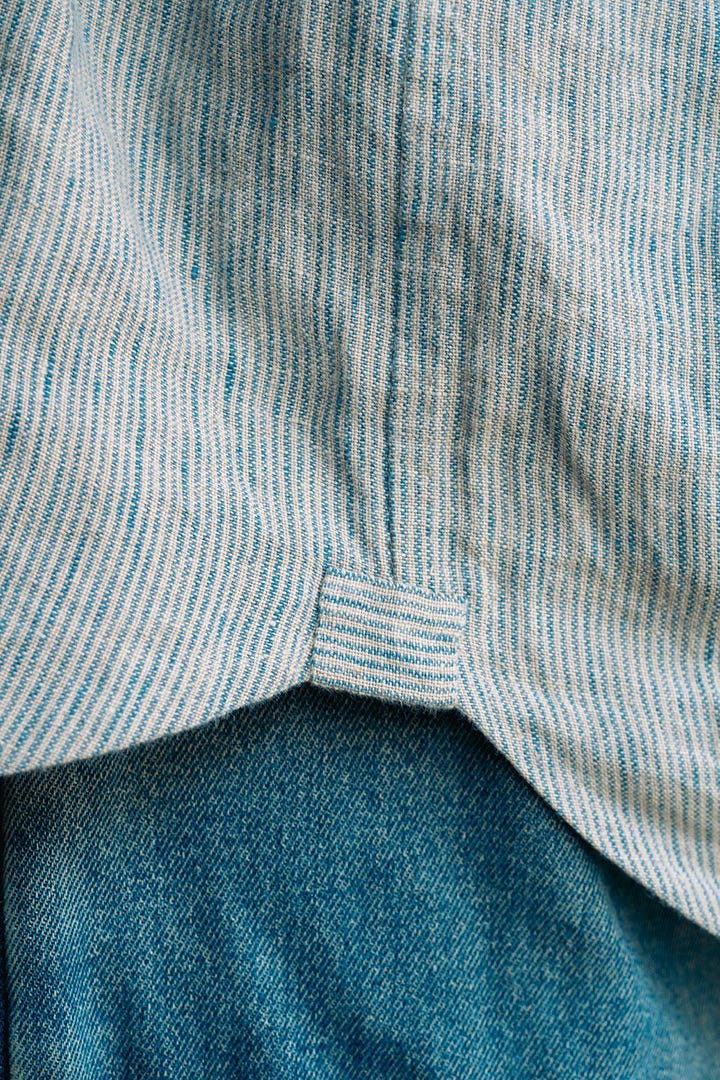
Sleeves
A flat-felled seam requires stitching it twice — once to join the pieces and then again to finish the edges. For the three-piece sleeves, that meant sewing 12 times in total, not counting the cuffs, the vents, and attaching both sleeves to the body. TBH, I have mixed feelings here. On one hand, I love hand sewing. On the other, three pieces for a single sleeve feels a bit excessive. Unless of course you do something fabulous with sleeve construction and not just making a regular old shirt sleeve.
Having three pieces also meant that instead of a classic placket, the sleeves had vents (basically instead of fully seaming two pieces together, you leave like 10 cm unseamed and finish the edges). Pattern instructions suggested using a serger to finish the sleeve edges, but since I don’t have one, I had to improvise by covering the vent tops with small fabric pieces. I didn’t mind doing it, but next time I use this pattern, I’m definitely redrafting the sleeves into a simpler, one-piece version.
Other than that, I love how the sleeves turned out. They are roomy, I can pull the sleeves up without undoing the cuffs, and the folds and draping look really good.
I also love how the pleats look. They are more like sisters than siblings on the two sleeves, but are still lovely!


Buttonholes
As always (two times out of two is considered always, right?), I’m super proud of my hand sewn buttonholes.
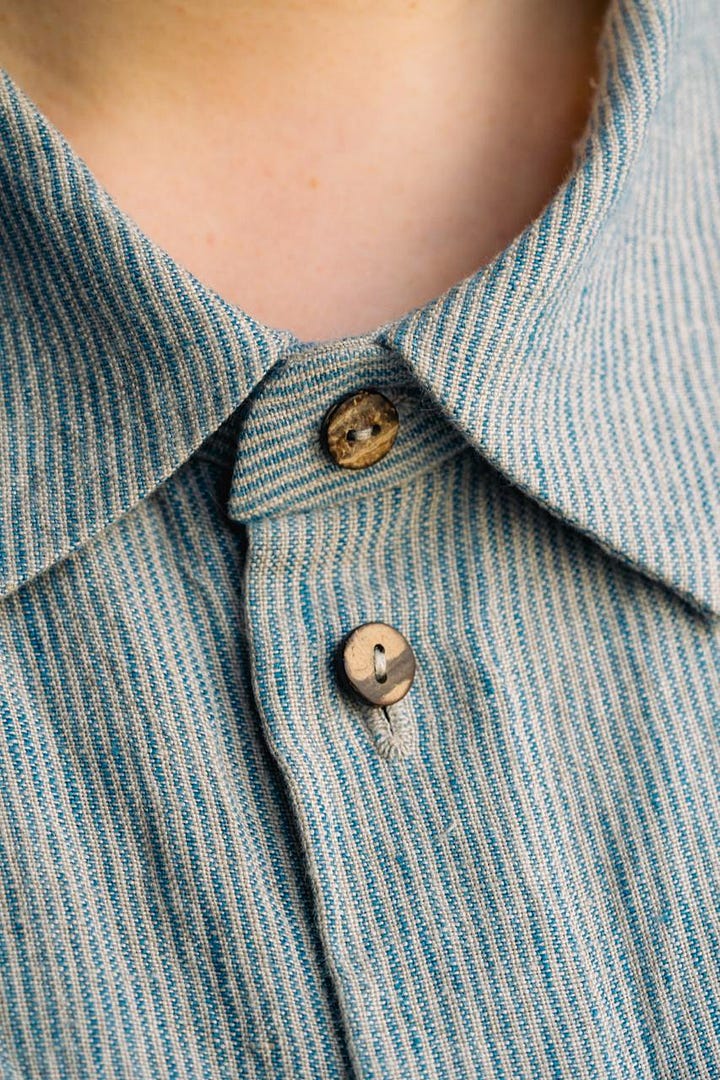
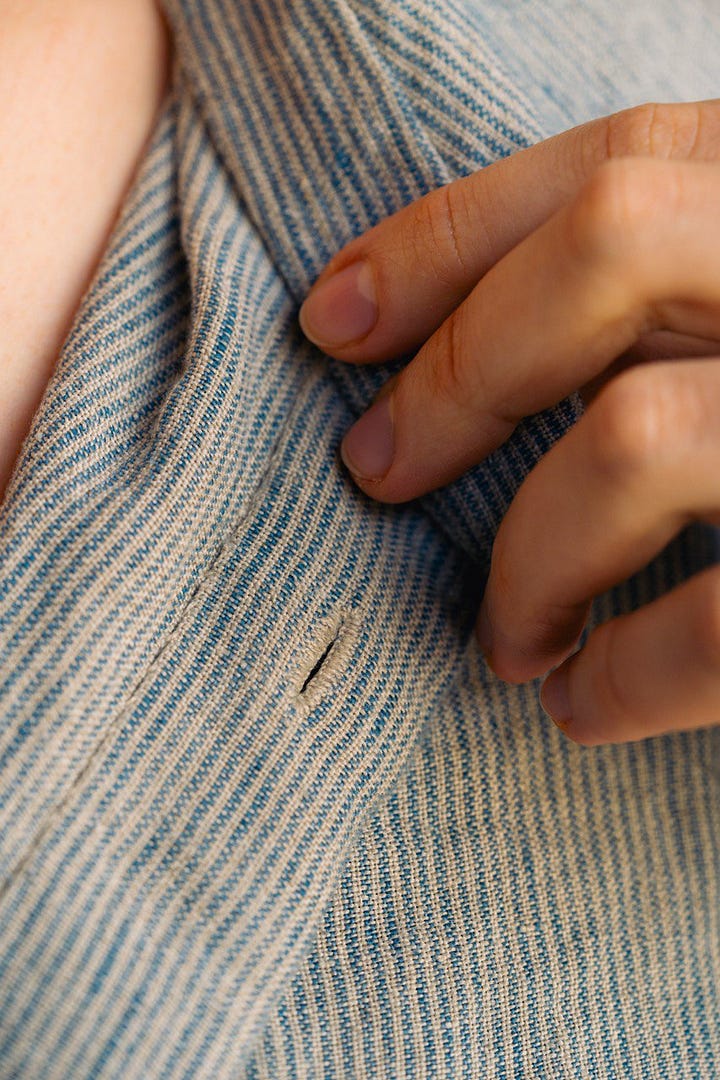
I love how (almost) all buttonholes turned out. I used the same thread for them as I did for the rest of the shirt.
They are all the same size, which would have seemed a miracle for me a few years ago. How do you calculate buttonhole size for when you’re hand sewing? After some googling, it turned out there’s a formula!
Buttonhole length = length of button + depth of button + ~3mm extra
I like my buttonholes slightly tighter than the ones on store-bought clothes, so I don’t always add the extra 3mm.
For example, for my previous shirt, I used very thin mother-of-pearl buttons, so instead of following the formula, I just went with button length + 1mm:
What I don’t love is how the fabric distorts around the buttonholes, which is something I plan to troubleshoot and solve this year.
Right now, my button plackets are just three layers of the fashion fabric with no interfacing. Adding interfacing to the entire placket would change its drape. And no matter if it’s adhesive interfacing or a sturdy cotton band, both would affect the look and feel.
Interfacing
I only used interfacing for the collar. I like how it turned out, but if I had to do this exact shirt again, I’d go with a lighter weight material.
And in general I’m not sure I love using fusible interfacing at all. I feel like no matter how light of a weight I choose, it still turns out too stiff. I have yet to find a woven fusible interfacing that I would really like. I know there are non-woven options, but they tend to disintegrate with time, and we don’t need more microplastics, do we? So I stick with the cotton-based woven options, but I am yet to find a combo of fabric and fusible interfacing that works for me.
So my goal is to find the golden spot in-between soft and form holding collars: just stiff enough to hold the shape without feeling rigid.
Stiffer collars and cuffs do work well for more formal shirts (but they are hardly my style). Here are two examples from a few years ago:


Fit and construction thoughts
Pros
Fougère is an oversize shirt, just the way I like it
It’s long enough to stay tucked in no matter what I do/how I move
Fabric choice is on point, yay me!
Cons
I’ve already mentioned my issues with the sleeves
I’m also not sure though that I love how the collar fits: it’s like 14 cm too big if I button it
Final thoughts
I love how this shirt turned out!
I wear it almost every day and don’t plan to stop any time soon.
Would I do another shirt like this? Sure! With the tweaks I mentioned already and maybe a few more.
Any lessons/plans?
I can make clothes! I mean I knew it already, but this is another confirmation. Moreover, I can sew clothes by hand!
I learned that hotels stopped having irons in every room. So if I take sewing with me for future trips, I need a tiny travel iron.
What I want to do:
Research non-fusible interfacings and do experiments with them
Experiment with different weights of linen thread for hand sewing
Find my recipe for the ‘soft relaxed collar that keeps its shape‘
Do more collars in general
Find a way to keep buttonholes from distorting the fabric while keeping the fabric drapey
Questions!
If you have questions about this shirt or anything else I mention here or elsewhere, write a comment or DM me! I’d be happy to talk about sewing and other makes.




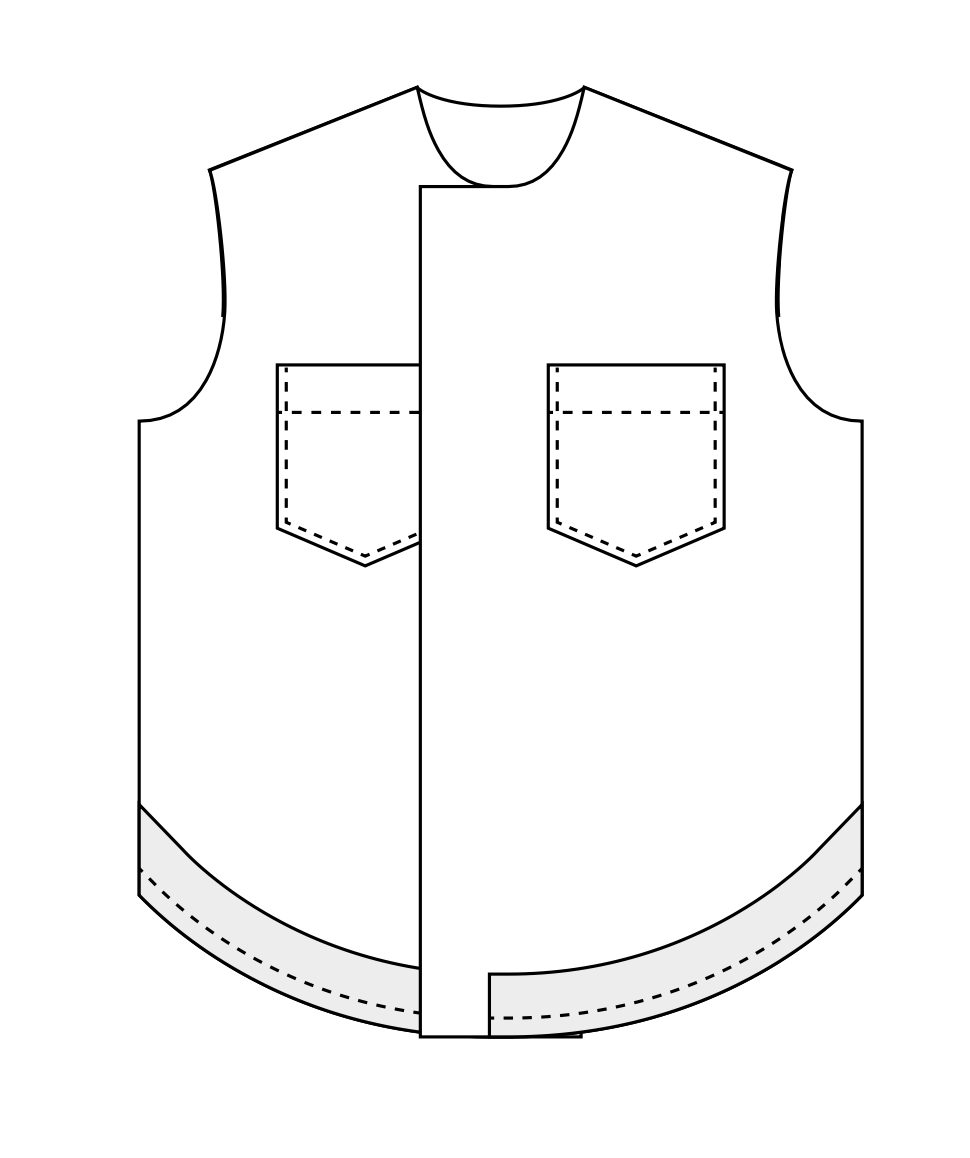
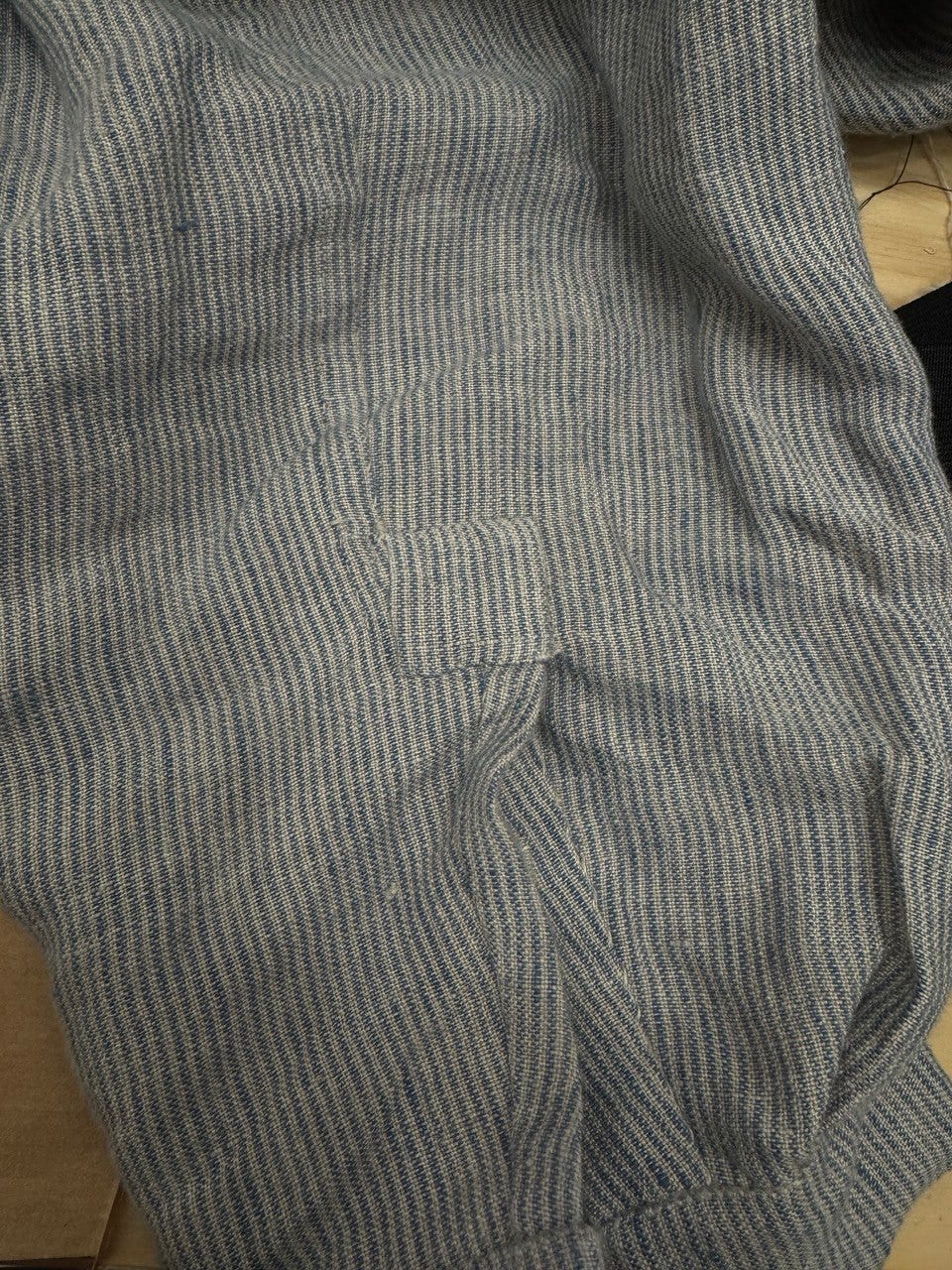


by hand, what patience!! your sewing and finishing look so lovely :~)
Your hand-sewn buttonholes are impressive! So consistent and neat. Love the fabric, too. What a handsome shirt!